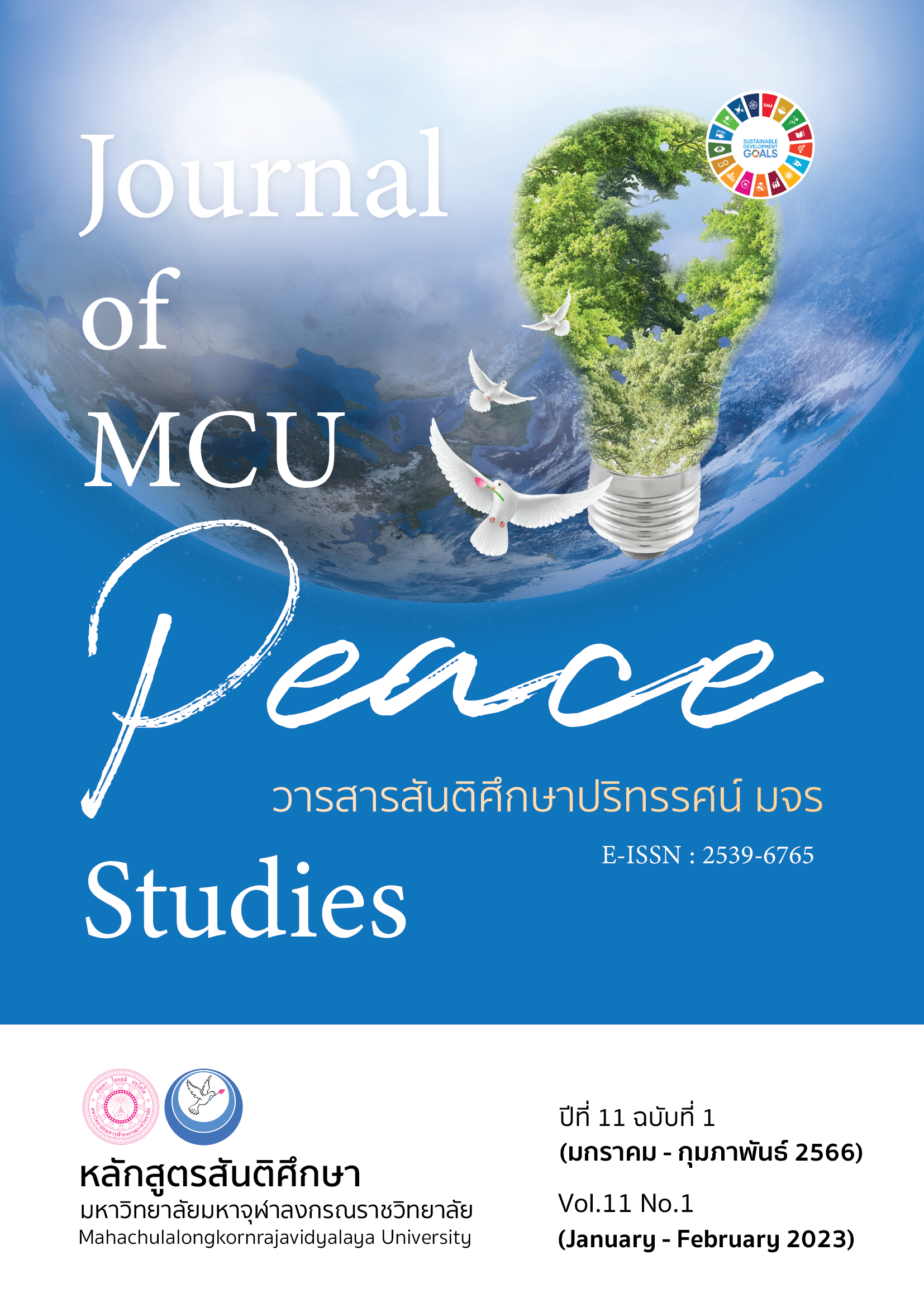หน้าที่ทางไวยากรณ์และความหมายของคำว่า “เสีย” ในภาษาไทยสมัยสุโขทัย
Main Article Content
บทคัดย่อ
บทความวิจัยครั้งนี้มีวัตถุประสงค์เพื่อศึกษาหน้าที่ทางไวยากรณ์และความหมายของคำว่า “เสีย” ในภาษาไทยสมัยสุโขทัย ซึ่งใช้ระเบียบวิธีวิจัยเชิงคุณภาพ เก็บรวบรวมข้อมูลคำว่า “เสีย” จากจารึกสมัยสุโขทัย (พ.ศ. 1800 – 1920) โดยใช้ฐานข้อมูลจารึกในประเทศไทยเฉพาะจารึกที่เป็นอักษรไทยสุโขทัย จำนวน 48 หลัก ใช้ทฤษฎีไวยากรณ์หน้าที่นิยมแบบลักษณ์ภาษาเป็นกรอบในการวิเคราะห์ข้อมูล
ผลการศึกษาพบว่า พบหน้าที่ทางไวยากรณ์และความหมายของคำว่า “เสีย” มีจำนวน 4 หน้าที่และ 4 ความหมาย ได้แก่ กริยาสกรรมไม่ระบุกรรม มีความหมายว่า หมดไป กริยาสกรรมแสดงการครอบครอง มีความหมายว่า สูญไป กริยาช่วยบ่งกาลอดีต มีความหมายบ่งว่าเหตุการณ์นั้นเกิดขึ้นในอดีตไปแล้ว และกริยาช่วยบ่งการณ์สมบูรณ์ มีความหมายบ่งว่าเหตุการณ์นั้นเสร็จสิ้นโดยสมบูรณ์แล้ว สรุปได้ว่า คำว่า “เสีย” ทำหน้าที่เป็นทั้งคำเนื้อหาและทำหน้าที่เป็นคำไวยากรณ์ โดยคำว่า “เสีย” แต่ละหน้าที่นั้นมีความหมายที่เกี่ยวข้องกับความหมายหลักของคำเนื้อหา
Article Details

อนุญาตภายใต้เงื่อนไข Creative Commons Attribution-NonCommercial-NoDerivatives 4.0 International License.
ทัศนะและความคิดเห็นที่ปรากฏในบทความในวารสาร ถือเป็นความรับผิดชอบของผู้เขียนบทความนั้น และไม่ถือเป็นทัศนะและความรับผิดชอบของกองบรรณาธิการ ยินยอมว่าบทความเป็นลิขสิทธิ์ของวารสาร
เอกสารอ้างอิง
Bamroongraks, C. (1987). Sukhothai Thai as a Discourse-Oriented Language: Evidence from Zero Noun Phrases. (Doctoral Dissertation). University of Wisconsin-Madison. Madison.
Givón, T. (2001). Syntax: A Functional-Typological Introduction. Philadelphia: John Benjamins Publishing.
Jaratjarungkiat, S. (2012). The Development of the Word /pen/ in Thai. (Doctoral Dissertation). Chulalongkorn University. Bangkok.
Khumting, T. (2020). Grammatical Functions and Semantic Aspects of the Word /Khîː/ in Thai. Journal of Language, Religion and Culture, 9(2), 57-75.
_______. (2021). The Status of Research on Grammaticalization in Thai. Journal of Nakhonratchasima College (Humanities and Social Sciences), 15(1), 241-255.
Lehmann, C. (2002). Thoughts on Grammaticalization. Erfurt: Universität Erfurt.
Meesri, V. (2019). Diachronic Study of Grammaticalization of the Word /?an/. (Doctoral Dissertation). Naresuan University. Phitsanulok.
Nanthakanok, K. (2019). A Study in Functions of the Word /khoj/ in Thai. Mangraisaan Journal, 7(2), 1-12.
Office of the Royal Society. (2010). Royal Institute Dictionary 2011. Bangkok: Office of the Royal Society.
Pa Nangmoa Inscription. (1392). Pa Nangmoa Inscription. Retrieved July 2, 2021, from https://db.sac.or.th/inscriptions/inscribe/detail/36
Panupong, V. (1989). Structure of Thai Language: Grammar System. (10th ed.). Bangkok: Ramkhamhaeng University Press.
Phanmetha, N. (2016). Thai Grammatical. (8th ed.). Bangkok: Chulalongkorn University Printing House.
Thepkanjana, K. (2016). Grammaticalization. Bangkok: Chulalongkorn University Printing House.
Wat Burapharam Inscription. (n.d.). Wat Burapharam Inscription. Retrieved July 2, 2021, from https://db.sac.or.th/inscriptions/inscribe/detail/254
Wat Chang Lom Inscription. (1384). Wat Chang Lom Inscription. Retrieved July 2, 2021, from https://db.sac.or.th/inscriptions/inscribe/detail/250
Wat Sri Chum Inscription. (1341). Wat Sri Chum Inscription. Retrieved July 2, 2021, from https://db.sac.or.th/inscriptions/inscribe/detail/177
Wongwattana, U. (2015). Morphology and Syntax in Linguistic in the Functional-Typology Approach. Phitsanulok: Naresuan University Press.


